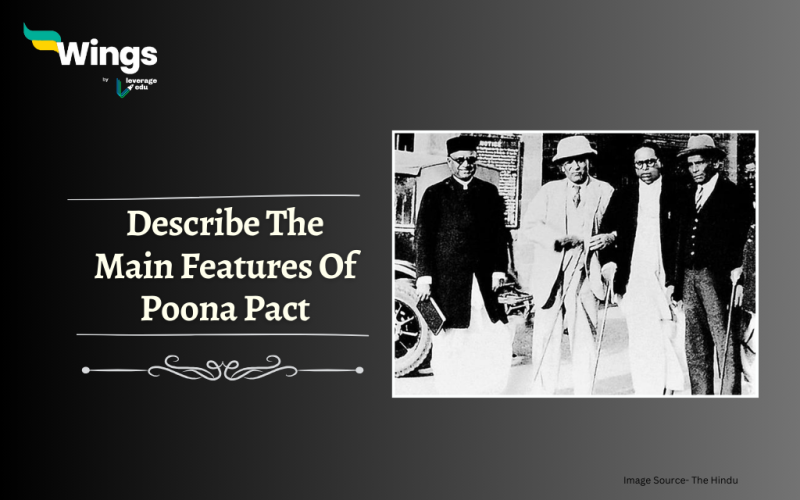The Poona Pact, also known as the Gandhi–Ambedkar Pact, was signed on September 24, 1932, between Mahatma Gandhi and Dr. B.R. Ambedkar. This pact was signed to mark the end of the fight against social discrimination and inequality in India. Poona Pact also aimed to address the issue of separate electorates for the depressed classes within the framework of the Indian Constitution. Let us describe the main features of Poona Pact and get more information about the pact, read the blog!
Main Features of Poona Pact
In 1932, the British government in India introduced the Communal Award, which sought to provide separate electorates for the depressed classes, now known as the Scheduled Castes. Dr. B.R. Ambedkar, leader of the Dalit community, welcomed the proposal. However, Mahatma Gandhi, on the other hand, opposed the idea of separate electorates. He embarked on a fast unto death to protest against the Communal Award, which led to negotiations between Gandhi and Ambedkar. The features of the Poona Pact include –
- Reservation of Seats – Reserved seats in the provincial and central legislatures for the depressed classes. This ensured political representation for the marginalised sections of society.
- Joint Electorates – The concept of joint electorates, where both the general and depressed classes would vote together, unity among different sections of society, promoting social harmony and integration.
- Weightage of Votes – The Poona Pact included provisions for the weightage of votes, wherein the depressed classes’ votes would carry more weight than those of the general population.
- Reserved Seats in Civil Services – Apart from legislative bodies, the Poona Pact also provided reserved seats in civil services for the depressed classes.
- Commitment to Social Justice – Maintain the commitment to social justice, equality and co-existence of a harmonious society. Educational Grants for depressed classes were also one of the features.
Also Read – Poona Pact Was Signed Between Whom?
In conclusion, the Poona Pact was the collective effort of visionary leaders like Dr. B.R. Ambedkar and Mahatma Gandhi to address the rights and representation of marginalized communities in India.
Relevant Blogs
| Non-Cooperation Movement | Civil Disobedience Movement in India |
| Tribal Movement in India | Poona Pact |
| Peasant Movements in India | Indigo Rebellion |
| Santhal Rebellion | Quit India Movement |
This blog was all to describe the main features of Poona Pact. If you want to read more articles like this, you can get Short notes on the Modern History of India here. Also, you can visit our general knowledge page on Indian History!
 One app for all your study abroad needs
One app for all your study abroad needs













